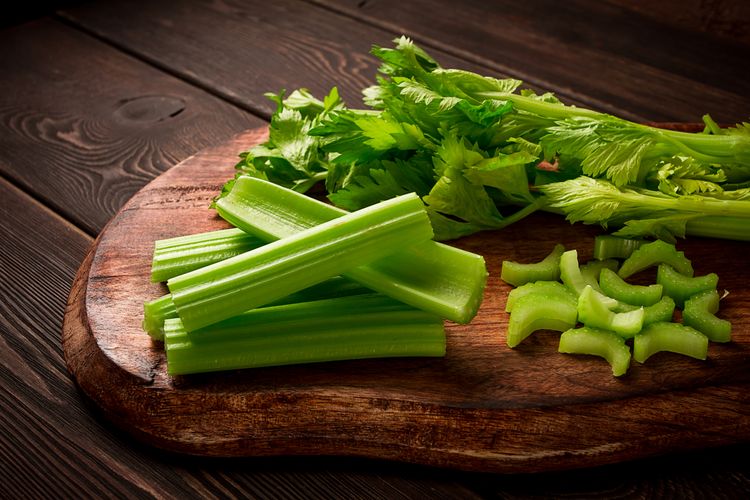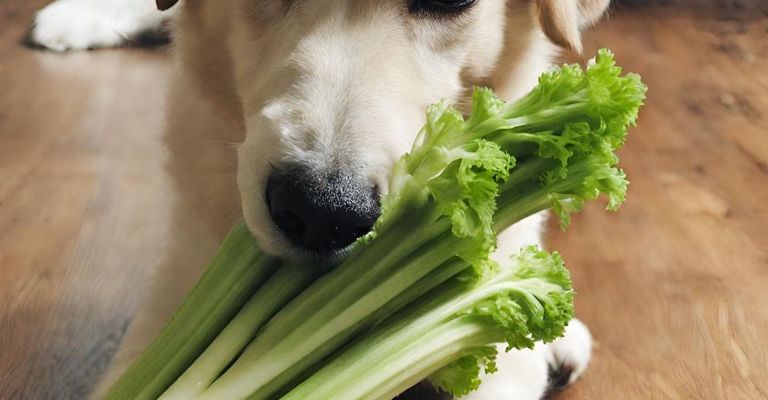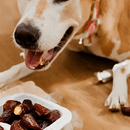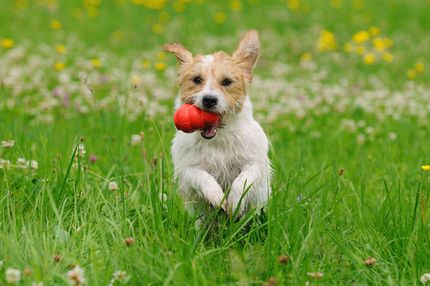In the world of pet nutrition, the question of whether dogs can eat celery is often asked. This article takes a comprehensive look at this issue by examining different types of celery, their advantages and disadvantages for dogs, suitable forms of preparation and the vitamins they contain. It also provides tips on the appropriate amounts to give your dog.
Different types of celery and their suitability for dogs
There are several types of celery to consider. The best known include celery stalks, celeriac and cut celery. Each of these varieties has different properties and nutritional profiles.

Celery is the easiest for dogs to chew and digest. It is rich in water and fiber, making it a good option for a healthy diet. Celeriac, known for its high levels of nutrients, is also a good choice but should be cut into smaller pieces and possibly cooked to aid digestion. Finally, cut celery, which is often used as a spice, is safe in small quantities but contains fewer nutrients than the other varieties.
Advantages and disadvantages of celery in dog nutrition
Celery offers several advantages for a dog's diet. It is low in calories and contains important vitamins such as vitamin A, B vitamins and vitamin C as well as minerals such as potassium. These nutrients support various bodily functions, including skin and coat health, and contribute to good heart health.
However, there are also some disadvantages. For example, celery in large quantities can cause gastrointestinal problems, and the hard fibers can be difficult for some dogs to digest. It is therefore important to feed celery in moderation.
Suitable ways to prepare celery for dogs
The best way to feed celery to dogs is in raw or cooked form. When raw, it should be cut into small pieces to minimize the risk of choking and digestive problems. Cooked celery is softer and easier to digest, but loses some nutrients during the cooking process.
Vitamins in celery and their importance
Celery is a good source of vitamin A, which is important for eye health, B vitamins, which support the nervous system, and vitamin C, a powerful antioxidant. It also contains potassium, which is necessary for healthy heart function.
The right amount
It is recommended to use celery only as an occasional snack or as part of a balanced diet. A rule of thumb is that "snacks" should not make up more than 10% of a dog's daily calorie intake. For a small dog, one or two small pieces of celery might be sufficient, while a larger dog can tolerate a little more.

In summary, celery is a safe and healthy snack for dogs as long as it is fed in moderation. Different varieties offer different nutrient profiles and should be prepared according to the dog's digestive capacity. The vitamins and minerals it contains make celery a useful addition to a dog's diet, but it should not be the main source of nutrition.
In practice, owners should always keep an eye on their dog's well-being and consult a vet if they are unsure about their dog's diet. With a balanced diet and consideration of the dog's individual needs, celery can be a valuable addition to a four-legged friend's diet.













